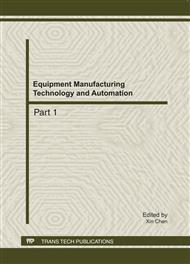p.595
p.600
p.604
p.608
p.612
p.616
p.621
p.627
p.633
Design of the Control Motor in Money Counter
Abstract:
This paper introduces a design of control motor in automatic money counter to deal with the issue that is over-count when facing counterfeited, polluted and incomplete notes. It is commonly required that the counter turns into stop status within tens of milliseconds. The advantages and disadvantages of the DC and AC motors are analyzed so as to develop a 400 motor control system. After experiments, the design is proved to be reasonable, reliable and accurate in terms of picking the unrecognizable notes.
Info:
Periodical:
Pages:
612-615
Citation:
Online since:
August 2011
Authors:
Keywords:
Price:
Сopyright:
© 2011 Trans Tech Publications Ltd. All Rights Reserved
Share:
Citation:


